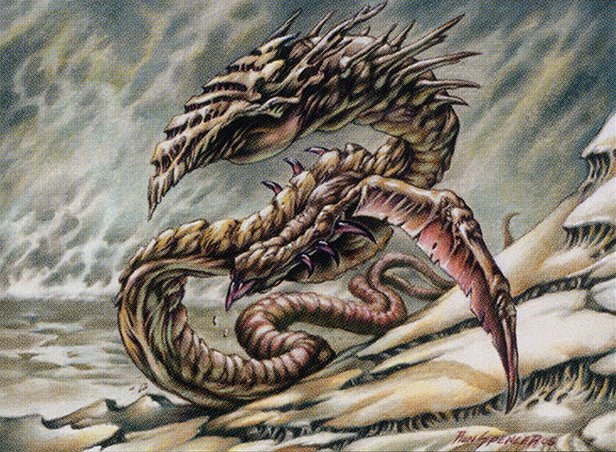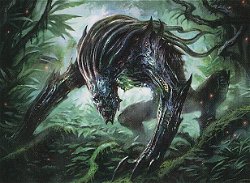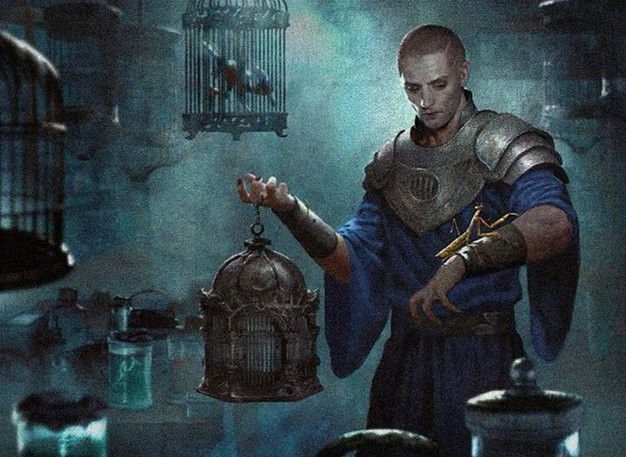Today I bring my vision about the slivers matchups and a summary of my experiences and results with the sideboard. I'll always highlight that sideboard and deckbuilding are, in general, not an exact science and they include many things, like the player's preference and the metagame where the deck will be played.
The following list is the one I'm playing currently. It is based on the list that Hunter_BR used to win the Pauper Challenge on 07/04/2020. I've made some changes.
In: 2 Spinneret Sliver;

Out: 2 Muscle Sliver;

This is the only matchup where I remove a sliver lord, and I do this because Spinneret is a natural 2/2 body which may assist me with trades without being beneficial to the opponent, like Muscle Sliver.
Truth be told, I HATE playing this match, and normally it is solved much more based on luck than the sideboard, on who manages to play more creatures faster than the opponent, because almost all creatures are symmetrical (except Bladeback Sliver and Predatory Sliver), inflating one of the two sides of the board. Or who manages to play a Bladeback first.
Some decks use Journey to Nowhere on the mainboard or sideboard and this is a card that would help a lot on this matchup. However, I prefer to play with a more explosive version of the deck, focused on creatures and interactions with WW and LTS, so I don't use journey, but it is a question of taste and playstyle!
In: 2 Gorilla Shaman, 1 Crimson Acolyte, Optional: +3 Prismatic Strands;

Out: 3 Bladeback Sliver, Optional: - 3 Lead the Stampede;

It depends on the version of Affinity that is being played by the opponent, but Gorilla Shaman ALWAYS comes in, removing 2 Bladebacks because they don't do much on this matchup. I like Crimson Acolyte on this match mainly because it is a good blocker against the Atog, in addition to being able to protect against Galvanic Blast and Temur Battle Rage.
Prismatic Strands is very good in dealing with the Atog+Flingcombo, Krark-Clan Shaman or just to hold back Atog for a bit. It is a little weird against Myr Enforcer, Carapace Forger and Frogmite, but LTS is very slow against Affinity, so I believe you shouldn't be afraid of removing it.
In: 4 Prismatic Strands, 1 Standard Bearer, 1 Hunter Sliver;

Out: 3 Lead the Stampede, 3 Bladeback Sliver;

On this matchup Lead the Stampede is really slow and ends up not being useful. In addition, LTS and Prismatic Strands don't interact well with each other, as Strands goes to the bottom of the deck if found by LTS, so my rule of thumb is to always remove LTS when I side in Prismatic Strands, using Winding Way as my only option to find more creatures.
Standard Bearer is obvious, isn't it? It forces the opponent to remove it if he/she wants to grow in the game, and with luck we have already created a strong board presence and won the game before the opponent is able to find this removal.
In: 4 Prismatic Strands, 1 Standard Bearer;

Out: 3 Lead the Stampede, 1 Bladeback Sliver, 1 Hunter Sliver;

The idea is similar to the sideboard against Stompy: LTS is too slow and has no interaction with Prismatic, Standard Bearer locks the opponent's game and Prismatic buys you more turns.
The difference is that Hunter Sliver goes away on this matchup because creatures with Hexproof can't be targeted by Provoke.
In: 4 Prismatic Strands, 1 Standard Bearer, 1 Bloodfire Dwarf;

Out: 3 Lead the Stampede, 2 Bladeback Sliver, 1 Hunter Sliver;

I remove LTS for the same reason I do against Stompy and Bogles. Hunter doesn't work against elves because all the important cards can be tapped (Priest of Titania and especially Timberwatch Elf, being able to "dodge" provoke, and they are also able to be tapped by Birchlore Rangers). Bloodfire Dwarf is able to wipe the table and Prismatic buys us some turns and is especially good because all of their creatures are green.
In: 2 Spinneret Sliver, 1 Hunter Sliver;

Out: 3 Bladeback Sliver;

The match against UR Fairies is a bit annoying to deal with considering the sum of counters plus removals. Hunter helps us to remove the Fairies, decreasing the power of Spellstutter Sprite and other threats, while Spinneret Sliver reduces their clock.
Against UR we are also able to include Crimson Acolyte, but I don't like it too much, as I think it is hard to play it early enough during the game and it will only be useful if you have available mana to protect your creatures against spells, as all of their creatures are blue.
7. UB Delver
In: 2 Spinneret Sliver, 1 Obsidian Acolyte;

Out: 3 Bladeback Sliver;

This matchup is really similar to UR Fairies/Delver. Spinneret comes in if they have Delver of Secrets. I recommend bringing in Obsidian Acolyte on this matchup because UB Delver is a deck with many removal spells, and the Acolyte may also become an "infinite" blocker against Gurmag Angler. However, I don't advise you to side in the Acolyte against UR because it will only be useful against removals or may even become an useless draw.
8. MBC
In: 1 Hunter Sliver, 1 Obsidian Acolyte;

Out: 2 Bladeback Slivers;

Obsidian so we can protect against removals and give protection to our creatures when it is necessary to attack without blockers or to protect against deathtouch. And Hunter is great to force the opponent to divide blockers and also to force the creature with deathtouch to block a creature that you don't care about losing it (like the Virulent Sliver or the second Gemhide Sliver), allowing your Lord to attack without risks. Sidewinder Sliver and Hunter together are great on this matchup, as flanking allows you to force the opponent to block with Thorn of the Black Rose or Bone Picker (in this case you would need two Sidewinders) without your creatures suffering any damage, and thus not dying because of deathtouch.
In: 4 Prismatic Strands, 1 Standard Bearer, 1 Hunter Sliver;

Out: 3 Lead the Stampede, 2 Bladeback Sliver;

I really don't like this matchup, and I don't have much to say about it. Bearer slows down our oponnent's game, depending on the enchantments they have in hand. Hunter is a huge help to force blockers and deal with everything that is possible on the oponnent's board (if your creatures have enough power and toughness, of course). In resume, on this matchup I pray to have access to many Prismatics and lords. Sidewinder and Hunter also help a lot.
In: 1 Hunter Sliver;

Out: 1 Lead the Stampede;

I used to have a lot of graveyard hate on my sideboard against this type of deck and against Tron, but as UW Familiars fell down after the ban of Mystic Sanctuary and Tortex is still rare on MTGO I haven't been too worried about them (and I also think gravehate doesn't work well with slivers) and my strategy is more like trying to hit hard and fast before the oponnent is able to establish a combat lock. I like Hunter Sliver (removing a Lead the Stampede, because these decks don't run a lot of removals) to remove important pieces like Sunscape Familiar, or to divide blockers in a full board against Tortex. Obsidian Acolyte may also become reaaaaaally strong against Tortex, protecting against Crypt Rats.
In: 4 Prismatic Strands; 1 Crimson Acolyte; 2 Lone Missionary;

Out: 3 Bladeback Sliver; 3 Lead the Stampede; 1 Hunter Sliver;

I remove LTS for the same reason I discussed before: It is really slow and has no synergy with Prismatic Strands. On this matchup you want to have maximum access to creatures and Prismatic as soon as you can. There's no secret here, you just need to pray for the sideboard to come and for the oponnent not to go too fast. Crimson is also good to keep the creatures on the board and to defend against Ghitu Lavarunner and Keldon Marauders.
It's really weird to write this part of the article and say you don't need to sideboard here, but that's really it, the maindeck already supplies the best we have against Tron, which are the Bladeback Sliver.
It is also possible to run graveyard hate on the sideboard as well, but I personally believe it isn't really effective against Tron, as the deck has many ways to dodge graveyard hate or to simply recover its resources by drawing them again.
But the main reason why I don't like to run Relic of Progenitus or Faerie Macabre is because I feel they make the deck too slow. My objective with slivers (especially against control decks) is simply to be faster than them and their locks and, in case they establish the lock, use Bladeback as a secondary wincon. Looking at it this way, gravehate cards have the tendency of making the deck slower and, in addition to the fact that I don't think they are as effective as they should, I don't think there's a good reason to run them.
In: 2 Spinneret Sliver; 1 Hunter Sliver,

Out: 3 Bladeback Sliver;

I don't consider this matchup to be complicated against slivers. It is very direct and it becomes problematic when the oponnent manages to kill a lot of our creatures while playing many flyers, having a bigger presence on the board. That's why I really like Spinneret to hold back the oponnent's attacks and Hunter to force their blockers in a way that benefits me.
Some people like Gorilla Shaman on this match, but I think it is too specific, needs to be played very early and I don't think it bothers the oponnent too much, but I recommend that every person makes his/her tests and decide as, in the end, it's all comes down to how you like playing.
In: 2 Spinneret Sliver, 1 Hunter Sliver, 3 Prismatic Strands;

Out: 3 Lead the Stampede, 3 Bladeback Sliver;

I like Prismatic because I REAAAAAAAAAAAAAAAAAALLY respect Rally the Peasants and, in general, bully is a really fast deck. Considering its creatures are all white, prismatic works really well, but it is also a matter of personal taste, as it may slow down our deck. Spinneret and Hunter work the same way that they do against Boros Monarch.
Those are my general opinions about each matchup, but I always advise you to test ever option and see what you like or adapt better to! Thank you and I hope you have enjoyed your reading. Don't forget to leave a comment, telling us about your opinion and experiences playing with the deck or against it!












— Comentarios 0
, Reacciones 1
Se el primero en comentar